|
80x5 -
240x3 -
240x4 -
320x1 -
320x2 -
320x3 -
640x1 -
640x2
Set display option above.
Click on
images to enlarge. |
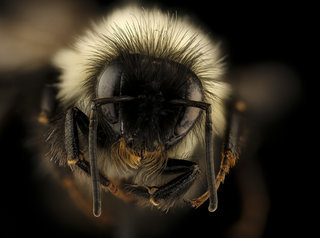
© Copyright source/photographer
· 7
Bombus affinis, m, face, tucker county allstar wv |
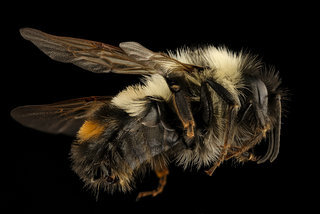
© Copyright source/photographer
· 7
Bombus affinis, m, right side, tucker county allstar wv |
|
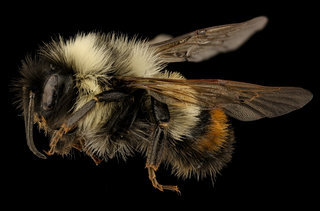
© Copyright source/photographer
· 7
Bombus affinis, m, side, tucker county allstar wv |
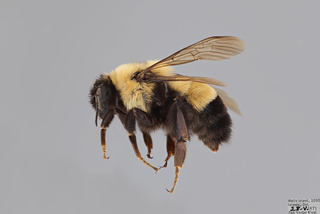
© Copyright Laurence Packer 2014
· 7
Bombus affinis FEM mm -. f |
|
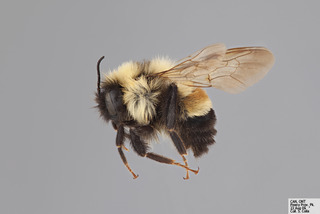
© Copyright Laurence Packer 2014
· 7
Bombus affinis MALE mm -. f |
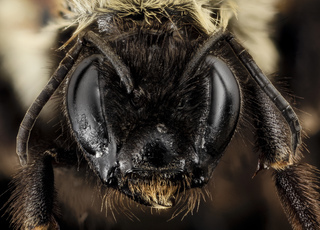
© Copyright source/photographer
· 5
Bombus affinis, F, face, big sky meadows, virginia |
|
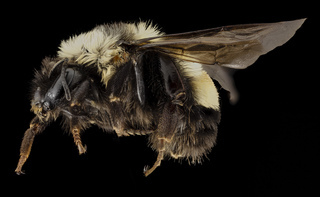
© Copyright source/photographer
· 5
Bombus affinis, F, side, sky meadows, virginia |
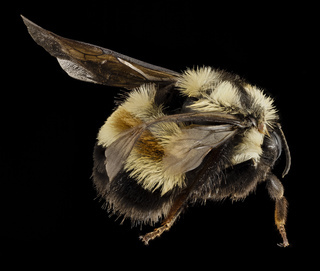
© Copyright source/photographer
· 5
Bombus affinis, F, Sky meadows sp, virginia, back |
|
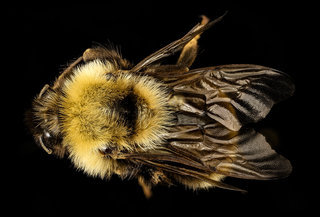
© Copyright source/photographer
· 5
Bombus affinis, m, racine wi, LW Macior back |
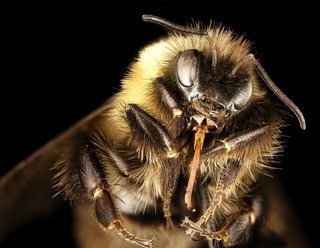
© Copyright source/photographer
· 5
Bombus affinis, m, racine wi, LW Macior face |
|
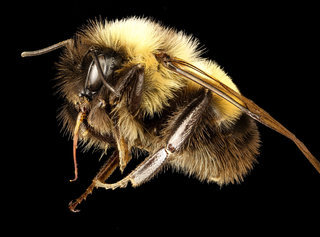
© Copyright source/photographer
· 5
Bombus affinis, m, racine wi, LW Macior side |
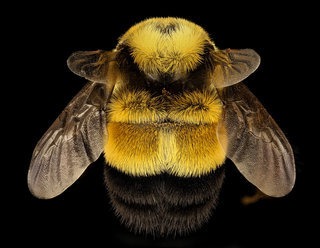
© Copyright source/photographer
· 5
Bombus affinis, queen, racine wi, LW Macior back |
|
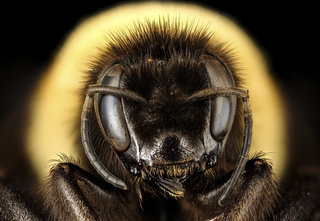
© Copyright source/photographer
· 5
Bombus affinis, queen, racine wi, LW Macior face |
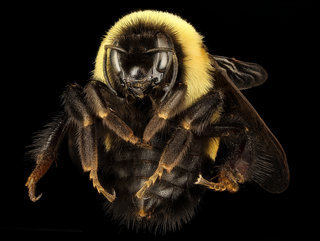
© Copyright source/photographer
· 5
Bombus affinis, queen, racine wi, LW Macior front |
|
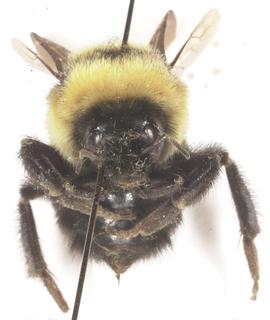
© Photographer/source
queen front
UGCA195804_01
|
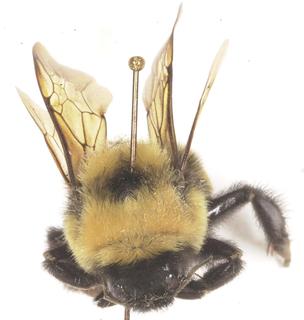
© Photographer/source
queen front top
UGCA195804_02
|
|
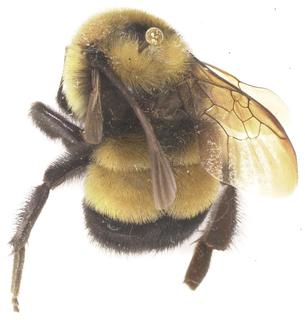
© Photographer/source
queen top
UGCA195804_03
|
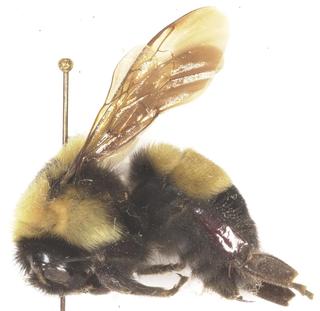
© Photographer/source
queen side
UGCA195804_04
|
|
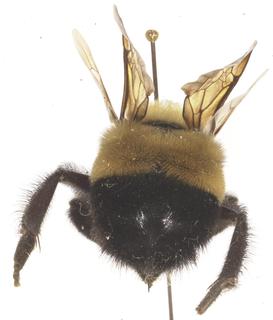
© Photographer/source
queen rear
UGCA195804_05
|
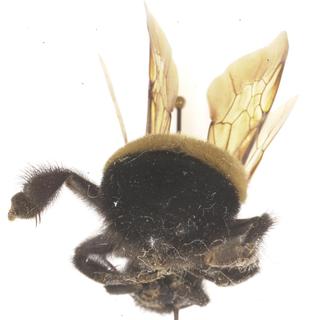
© Photographer/source
queen rear tip
UGCA195804_06
|
|
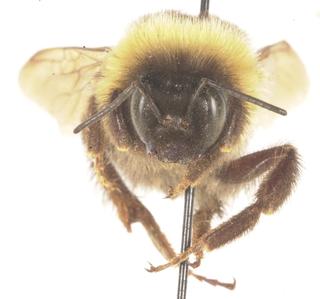
© Photographer/source
worker front
UGCA195805_01
|
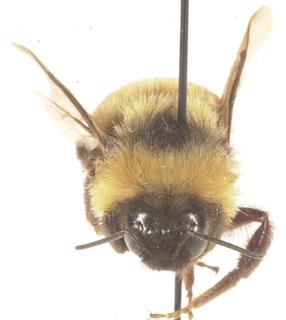
© Photographer/source
worker front top
UGCA195805_02
|
|
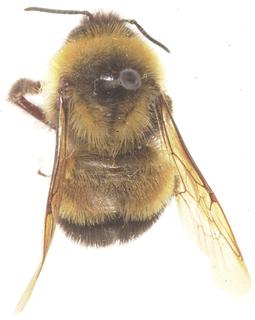
© Photographer/source
worker top
UGCA195805_03
|
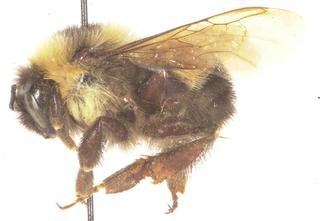
© Photographer/source
worker side
UGCA195805_04
|
|
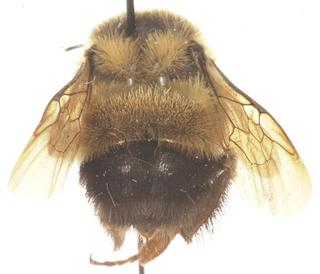
© Photographer/source
worker rear
UGCA195805_05
|
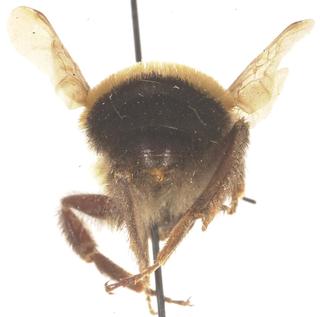
© Photographer/source
worker rear tip
UGCA195805_06
|
|
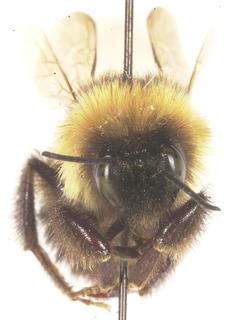
© Photographer/source
male front
UGCA195806_01
|
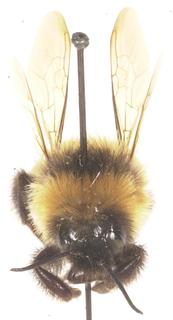
© Photographer/source
male front top
UGCA195806_02
|
|
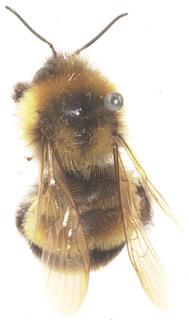
© Photographer/source
male top
UGCA195806_03
|
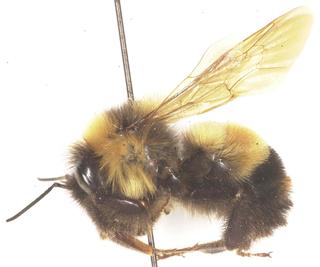
© Photographer/source
male side
UGCA195806_04
|
|
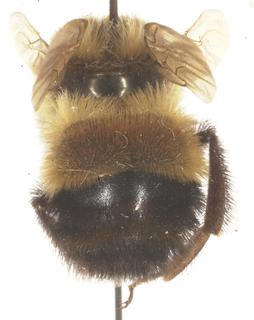
© Photographer/source
male rear
UGCA195806_05
|
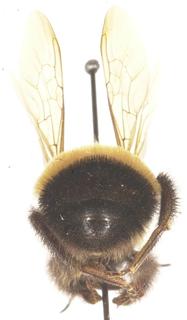
© Photographer/source
male rear tip
UGCA195806_06
|
|
Overview |
Reprinted with permission from: Mitchell, T.B. 1962 Bees of the Eastern United States. North Carolina Agricultural Experiment Station Technical Bulletin No. 152.
QUEEN—Length 21-22 mm., breadth of abdomen 9.5-11 mm.; black, legs becoming somewhat more piceous apically, mid and hind spurs reddish-piceous, tegulae piceous to black; wings rather deeply and uniformly infuscated, veins brownish to piceous; pubescence copious and dense but rather short in general, entirely black on head, on venter of thorax, propodeum, and in large part on legs; pronotum, scutum, scutellum and pleura largely yellow pubescent, the scutum black in a rather restricted area posteriorly, with intermixed black and yellow hairs between this patch and tegulae; tarsal segments in part with very fine pale pruinose pubescence, this distinct, especially on hind basitarsi; corbicular fringe of rather elongate, blackish hairs; pubescence entirely yellow on abdominal terga and 2, that on 2 with a somewhat reddish tinge at certain angles, entirely black on 4-6; clypeus finely and closely punctate laterally and above, broad median area shining, very sparsely and minutely punctate, becoming rather closely punctate along the narrow apical margin; labrum with a basal ridge which interrupted medially, this area somewhat excavated, surface on each side considerably depressed, quite copiously covered with short yellowish hairs; apex of mandibles with a pair of inner teeth, the lower third rather deeply and roundly emarginate, forming a quite distinct ventral apical angle, outer face somewhat shining, minutely punctate; malar space smooth and shining, without evident punctures, its median length considerably less than basal width of mandibles, no more than one-sixth length of eye; punctures of face very fine and dense medially, becoming somewhat more distinct and coarse toward ocelli but still close, a limited, shining, impunctate area adjacent to each lateral ocellus; vertex very finely and densely punctate medially, becoming somewhat more distinctly but finely punctate laterally; antennal scape very slightly more than half total length of flagellum, basal segment of flagellum very slightly longer than segment 3, and 3 somewhat longer than 2; hind basitarsus quite broad, posterior margin slightly curved; tergum 6 smooth, rather narrowly rounded apically, punctures exceedingly minute and hardly evident.
WORKER—Length 11-16 mm., width of abdomen 5-8 mm.; pattern of pubescence and structure very similar to queen, but pubescence somewhat more copious and elongate, that on tergum 2 more deeply tinged with reddish or rufous.
MALE—Length 13-17.5 mm., breadth of abdomen 5-7 mm.; black, including legs and tegulae, spurs somewhat more reddish-piceous; wings lightly infuscated, veins testaceous to piceous; apical margins of abdominal terga very narrowly yellowish-hyaline; pubescence long and copious in general, largely black on head but with a few pale hairs intermixed on vertex; posterior half of scutum with numerous dark hairs intermixed with light, forming an obscure, interalar band, thorax otherwise largely pale yellowish pubescent; basal segments of legs, including the femora, with long, more or less intermixed light and dark hairs, tibiae rather prominently fringed posteriorly with largely pale pubescence, with some darker, shorter hairs beneath, hind tibiae prominently fringed with elongate hairs, posterior fringe pale in part; abdominal terga 1 and 2 entirely pale pubescent, 3-7 black, in marked contrast; clypeus very finely and densely punctate beneath dense pubescence; labrum broadly truncate, somewhat rounded laterally, surface shining, irregularly and finely punctate; mandibles small and slender apically, distinctly bidentate, outer surface densely covered with yellowish, appressed tomentum, lower margin fringed with elongate, curved, more or less yellowish hairs; malar space smooth and shining, very vaguely and minutely punctate, its median length slightly greater than basal width of mandible, eye nearly five times as long; median area of face very finely and densely punctate, becoming somewhat more shining and sparsely punctate below ocelli, shining and largely impunctate between lateral ocelli and eyes; vertex dull, with very fine and close punctures, these becoming more sparse laterally; segments 1 and 3 of flagellum about equal. segment 2 considerably shorter; outer surface of hind tibiae quite fiat, rather smooth, shining and largely impunctate, somewhat resembling corbicula of female; hind basitarsus slightly and gradually narrowed toward base; sterna 7 and 8 and genital armature resembling those in terricola (fig. 133).
DISTRIBUTION — Ontario to New Brunswick, south to North Carolina, April to October.
FLOWER RECORDS — Aralia, Aster, Hydrangea, Mains, Robinia, Solidago and Vaccinium.
|
|
|
Identification |
Extracted from The Bumblebees of Eastern Canada by Laverty (1988).
Description. Body size of queen medium to large: worker and male medium.Head broadly
rounded: malar space short. about two-thirds as long as wide in female, slightly wider than in male. tongue short. Colouration of queen different from that of worker and male. Some queens and males with yellow pile on posterior margins of vertex. Occasionally workers have brown pile on T1 in addition to T2.
Ecology. One of the earliest species to emerge in spring; commonly bites holes in flowers that have corolla tubes. Nests underground.
Extracted from A MONOGRAPH OF THE WESTERN HEMISPHERE BUMBLEBEES (HYMENOPTERA: APIDAE; BOMBINAE) by Millrion, H. (1971).
DESCRIPTION. Queen. Length, 21.0 mm; width at wing bases, 10.0 mm; abdomen, 11.0 mm, width across T2, 10.5 mm; front wing length, 18.0 mm, width 6.5 mm. Head: Frontal outline triangularly rounded (excluding mouthparts), distinctly wider than high; vertical region depressed (concave) especially about ocelli, with small to medium irregular punctures except smooth and polished on ocellar half of ocellocular area; ocelli positioned somewhat below supraorbital line in weak arc anteriorly inclined, removed from one another about as much as their diameters, ocellocular line somewhat less than interocellar line; outline of compound eyes narrower above than below, the inner margins of both rather strongly con¬vergent dorsally, each eye slightly less than three times higher than wide; clypeus distinctly broader than high, strongly convex, well covered (rather densely) with small to medium punctures; labrum about 21 times wider than thick, with strong triangulate tubercles rather coarsely punctate above, below broadly shallowly concave and less punctate, directed ventro-mesad, their well-separted inner summits about as far apart as length of F2, the distinct arcuate labral shelf extended slightly laterad of inner tubercle summits; malar space distinctly shorter than distance between (and including) mandibular articulations, irregularly convex and sparsely sculptured; flagellum nearly twice as long as scape, Fl about H times longer than distal width, distinctly longer than F3 and about one-third shorter than F2-3 combined. Legs: Meso-basitarsite elongate rectangular, distally shaped as in t. terricola; hind tibial surface shining, weakly alutaceous, longitudinally convex a little anteriad of middle; metabasitarsite twice as long as its widest dimension, posteriorly evenly arcuate from base to distal end, the outer weakly alutaceous surface more deeply concave medially sub-basically, the disto-posterior angle ob¬scurely rounded and in recess to disto-anterior angle. Pubescence: Rather short, dense, some hairs longer on face, vertex and on distal abdominal terga; metabasitarsal posterior fringe composed of relatively short arcuate hairs, gradually diminishing in length from base to distal third of segment. Color: Head black with only slight admixture of yellowish pile on face and vertex, but with considerable lemon yellow at sides of center on occiput. Thorax (maize) yellow except noticeable intermixture of black hairs across interalar area especially on the mesothoracic disc. Legs black. Abdominal Tl-2 entirely covered with (cadmium) yellow, T3-6 black except sparse scattered yellowish hairs on T3 observable under strong illumination. Wings lightly, uniformly infumated with brown.
Worker. Length, 15.0 mm; width at wing bases, 6.5 mm; abdomen, 9.0 mm, width across T2, 7.0 mm; front wing length, 13.0 mm, width, 5.0 mm. Morphological characteristics other¬wise similar to those of the queen except Fl distinctly longer than F2 but only slightly longer than F3. Legs: Similar to those of the queen. Pubescence: Closely compares with that of the queen but somewhat looser. Color: Head black without noticeable intermixture of any yellow. Thorax yellow except metapleurum black and interalar area with considerable inter¬mixture of black, predominantly so on the disc (often with rather well-defined complete interalar black band). Wings somewhat paler than those in the queen. Abdomen as in the queen except basal two-thirds of T2 orange rufous to ferruginous, T3-4 black as in the queen (but sometimes with varying amounts of coppery or rusty red — variable), remainder of abdomen as in the queen.
Male. Length, 16.0 mm; abdomen, 9.0 mm, width across T2, 7.0 mm; width at wing bases, 6.0 mm; front wing length, 14.5 mm, width, 5.0 mm. Head: Frontal outline ovoid triangular (excluding mouthparts), about as wide as high; compound eye little more than twice as high as broad, more broadly rounded below than above, its inner margin weakly concave outwardly, slightly moreso above; vertex nearly flat, covered with small to medium irregular punctures, the ocellocular area smooth and polished except the ocular one-third with weak separated punctations; ocelli located transversely on supraorbital line, each slightly closer together than their diameters, interocellar and ocellocular lines equal; malar space equal to distance between (and including) mandibular articulations, its surface weakly irregularly convex and sparsely punctate; labrum subrectangular, about 2± times wider than thick, its ventral margin arcuate, its surface moderately pubescent, without prominent callosities; flagellum twice as long as scape, Fl distinctly shorter than F3 but noticeably longer than F2 which is H times longer than its distal width. Legs: Mesobasitarsite elongate subrectangular, nearly 3* times longer than the greatest distal width; outer hind tibial surface moderately convex longitudinally a little anterio-rad of middle, microscopically alutaceous, covered with reclining pubescence except on median distal half; metabasitarsite little more than 3 times as long as its greatest width, its outer surface strongly longitudinally concave, covered with well-separated recumbent hairs, the posterior fringe rather short, longest beyond base to distad of middle thence gradually declining to short more numerous hairs on distal third. Pubescence: somewhat longer and definitely looser than that of female, especially on face and vertex. Genitalia, seventh and eighth abdominal sterna (PL X). Color: Similar to that of worker on head and thorax except the yellow is more drab; legs black, the hind tibial posterior fringe with some pale tinge; abdominal Tl drab yellow, T2 mostly very pale burnt sienna except drab yellow laterally and narrowly mid-posteriorly, T3-7 mostly black except some pile laterally on T4-7 with pale tinge.Redescribed from hypotypes. Queen, St. Paul, Minnesota], May 1, 1939, R. Dawson—H. Milliron; worker, Columbus, 0[hio], Aug. 13, 1947, H. E. Milliron; male, Hocking Co[unty], Salt Creek T[o]w[nshi]p, Ohio, Aug. 26, 1945, Edward S. Thomas [all HEM].
TYPE. Examined a $ (not a $ ) in the collection of the Academy of Natural Sciences of Philadelphia. This is a Cresson (1916: 110) lectotype.
TYPE LOCALITY. Canada (Ontario). Number of specimens at hand: 271. In flight: April to mid-October, the workers appearing in early June, and the males about mid-July. Distribution: (vertical), sea level to ca. 6000 ft; (horizontal), southern Quebec and Ontario in Canada, and Maine to Georgia, northwest to the Dakotas in the United States. Floral visitations: Angelica, Asclepias, Aster, Cha-maedaphne, Cirsium, Epilobium, Eupatorium, Lythrum, Malus, Medicago, Robinia, Solidago, Spiraea, Vactinium, and Veronica, Lutz and Cockerell (1920) also re¬ported Ceanothus, Parnassia, and Ribes, and Frison (1926a) recorded the species visiting Carduus and Impatiens. Plath (1934) gave Berberis, Delphinium, Hyperi¬cum, Kalmia, Linaria, Rhododendron, and Rosa. Mitchell (1963) added Aralia and Hydrangea.
COMMENTS: Evidently this is the most constant species of the genus Bombus (s.s.) in the Western Hemisphere. The queen appears chromatically most often as redescribed here, except that sometimes an indefinite black interalar band is often apparent, and on many specimens a conspicuous circular black patch occurs on the mesothoracic disc; abdominal T2 is usually entirely yellow but on some specimens the proximal two-thirds is of a dull burnt sienna, as on many workers; it is uncom¬mon for the queen to show any rusty or coppery red on any of the normally entirely black abdominal T3-5.1 have not seen a melanic of this species. In this connection, the queen with abdominal T2 entirely black, save for a sprinkling of yellow at extreme base, reported by Bequaert and Plath (1925: 279) as belonging to this species, could not be located by me despite an intensive search for it at Cambridge, Mass., or elsewhere, and it is highly probable that a misidentification was involved, this specimen being more likely a queen of Pyrobombus (P.) impatiens (Cr.), an adventive into the affinis nest whose "entire" collection was reported upon (loc.
cit.).
The worker and male often have an indefinite interalar black band (widest medially), and as often none at all. The so-called variety novaeangliae described by Bequaert (1920: 6) refers to worker and male specimens which display a varying amount of rusty or coppery red pile on abdominal T2-5 (female) and less com¬monly on T2-6 in the male. The reddish pubescence, when evident on any specimen, will be noted on abdominal T4 foremost in specimens of all castes; but, the amount of such off-color is extremely variable on any abdominal tergum beyond T2, and also as to the number of terga so affected between T3-5 in the female and T3-6 in the male.
The occurrence of rusty or coppery red pubescence in varying amounts on abdominal T2 or 3-6 (female) or on normally, or for the most part, all black T2 or 3-7 (male) is nothing unusual; for example, I cite similar conditions in specimens of Megabombus (M.) atratus (Fkln.), Megabombus (B.) griseocollis (De G.), Pyrobombus (P.) impatiens (Cr.), Pyrobombus (P.) bimaculatus (Cr.), Pyro-bombus (P.) vagans (Sm.), and others (c/. each). Chromatic aberrations relating to pubescence are common and likely the results of deficient (abnormal) immature physiological development in every case, except in instances where the existing gene pool of a species normally promotes variability in accord with different environ¬mental conditions in the range, or even within varying conditions in the nest of known variable species.
The publications of Bequaert (19206: 6-7), Bequaert and Plath (1925: 278-280) pertaining to the chromatic aberration "novaeangliae" are most confounding in respect to the "type" series; when this published information was critically com¬pared by me with the "type" material available in the collection of the Museum of Comparative Zoology, Harvard University, Cambridge, Mass., I sensed inex¬cusable discrepancies between "types" and published information. Apparently, the "types" were labeled at some time subsequent to the publication of the above papers, and without serious attempt to bring labeling of such specimens and published infor¬mation into accord. Bequaert (19206: 6) whose original description of novaeangliae referred to both workers and males indicated on the following page that the holotype is a male from Forest Hills, Mass., on this same latter page (part of Bequaert's second variational category) two males (June 1911, W. M. Wheeler) are referred to, one presumably the holotype. I found no such male conforming with these data in the collection of the Museum of Comparative Zoology, Cambridge, and con¬cluded that a mistake in the sex of the holotype had been made. A worker labeled as type and conforming as near as could be judged with the description and collect¬ing data (Forest Hills, Mass., June 1911, W. M. Wheeler) was, therefore, labeled by me as the lectotype, 1960. While "novaeangliae" is given no nomenclatorial status here, this discussion of the confusion with regard to a type is warranted; and, intended to prevent additional misunderstanding of the common chromatic aberrations that occur in this and other species of bumblebees.
No significant morphological variations have been detected in any caste of this species. Length of workers ranges from about 8.0 mm to slightly more than that given in the redescription.
Extracted from: Laverty T.M., & Harder L.D., (1988). The Bumble Bees of Eastern Canada. Can. Ent. 120: 965-987.
Description. Body size of queen medium to large; worker and male medium. Head broadly rounded; malar space short, about two-thirds as long as wide in female, slightly wider than long in male. Tongue short. Colouration of queen (Fig. la) different from that of worker (Fig. lb) and male (Fig. lc). Some queens and males with yellow pile on posterior margins of vertex. Occasionally workers have brown pile on T1 in addition to T2.
|
|
|
Names | |
|
|
| Supported by | |
Updated: 2024-04-27 06:15:17 gmt
|